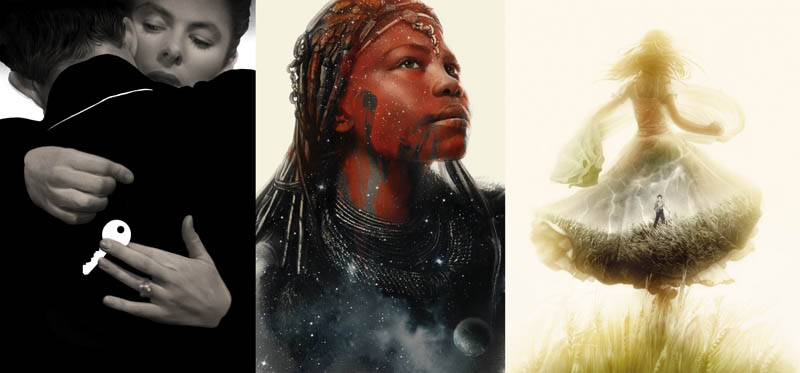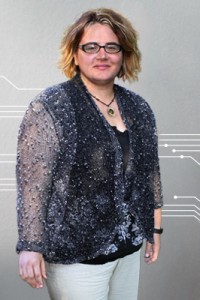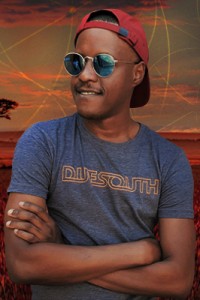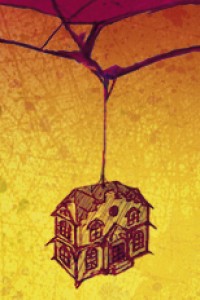Spotlight on: Greg Ruth, Artist

Greg Ruth is a New York Times bestselling author of The Lost Boy and NDEH (with Ethan Hawke) and has worked making books and comics since 1993. He has published work through The New York Times, DC Comics, Fantagraphics Books, Mondo, Dark Horse, HarperCollins, Macmillan, Hyperion, Simon and Schuster, the Criterion Collection, Slate, CNN, Penguin, Hachette, and Tor. He has created two music videos for Prince and Rob Thomas, and has worked on nearly a dozen children’s picture books including Our Enduring Spirit (with Barak Obama); Red Kite, Blue Kite (with Ji Li Jiang); A Pirate’s Guide to First Grade (and Recess) (both with James Preller); and his latest from Feiwel & Friends entitled Coming Home. His comics work includes Conan: Born on the Battlefield (with Kurt Busiek), Freaks of the Heartland (with Steve Niles), Sudden Gravity, The Matrix Comics, and Goosebumps with R.L. Stine. He is currently working on his second graphic novel, Meadowlark (with Ethan Hawke). He lives and works in Western Massachusetts.
Talk a bit about one of your most interesting cover projects.
Recently I was asked to do a jacket cover and a few interior images for Alfred Hitchcock’s Notorious for Criterion and it was a dream job on every level. Ingrid Bergman was one of my first and favorite actors of that period and ironically the original DVD release of the film was the very first Criterion disc I ever bought, so being able to take this on was such a closed and perfect circle for me personally. It was tricky because we had to do something that expressed her glamour and the noirish sense of the film properly and loyally, which meant being very detailed and specific about the drawing. There had to be a precision to it, and the way it was done was so simple and minimal there was no flourish to hide behind. We spent more time tweaking the details of that piece than any other, flipping the image, putting the ring back on the correct hand after the flip, the eyes, and the position of the hands. All stuff that sounds really boring and technical but was very challenging and involved. This was a big project for Criterion and immensely personal for me, so getting it right was an absolute necessity. Happily we managed to stick the landing, and the five or six interior drawings that pepper the inside of the case are some of my most favorite works of the last five or more years. Just an absolute blast working on it, and deeply rewarding.

Do you draw from life or from photo reference or both?
I do both. Sometimes you come upon a need for a lighting moment or a physical gesture that requires popping out the camera phone and grabbing a pic of my arm to see how it looks holding some object or pushed against the floor. What reference can bring are the multitude of details and specifics of a gesture or a movement that you can’t necessarily readily recall off the top one’s head. I used models, Charlie and Bill Judkins, for my graphic novel with Steve Niles, Freaks of the Heartland – and while I didn’t use them much after the first three issues as I had sort of pegged them by then, it was amazing to have their interaction, and the character details came through early on during those sessions. The way Charlie sat, his shoulders down, how he nervously twisted his leg, or how he interacted with his Dad, who was playing this hulking monster creature, really brought so much character to the book that would have been absent without them. I use reference more spottily these days, but in this new book with Ethan Hawke, Meadowlark, I found a bunch of old model cars for the story – it has a lot of scenes inside cars and on the road with them. It was so helpful to have that kind of reference on hand so I wasn’t stuck doing panels of only scenes that were comfortable to draw or came readily. Reference can be really freeing, but can also be a trap if you lean on it for anything other than baseline data about the forms. After that, put the reference away and draw.
What was the best piece of advice you’ve ever received as a professional artist?
I think for me the most lasting piece of advice is from my friend and editor of the Matrix comics I did a while back when we were developing new stories from that universe – Spencer Lamm is brilliant in a thousand ways, but in this regard he is unparalleled. “Every panel in a comics story should tell us something new.” It’s simple and basic and probably obvious, but it creates a profound effect on the work when you boil it down, and makes for much better storytelling too. I apply this notion to my cover work and poster art as well. It keeps me constantly asking whether or not I have added to the experience of the story or book, or merely repeated something already there. The former of the two is the goal. Art is never about the piece in front of you, but the next one, so this ethic keeps me pushing forward to use every project as a learning exercise to add to and make better, the next one to come.
Is there an upcoming project you’d like to tell our readers about?
I’ve recently been doing a lot of work for Nnedi Okorafor’s novels – both domestically and abroad, but the recent reissue of these beautiful new Binti novellas from Tor Books have really been something special. I must have done at least a half dozen covers for all her novels but these have been the most challenging and rewarding to do and to see in print. They are I believe available now. DAW is also putting out a Binti omnibus that holds all the novellas and a new Binti story this winter in 2019, with a new cover by me also super excited to see it.
Photo of Greg Ruth by Alan Amato
This spotlight and more like it in the January 2019 issue of Locus.
 While you are here, please take a moment to support Locus with a one-time or recurring donation. We rely on reader donations to keep the magazine and site going, and would like to keep the site paywall free, but WE NEED YOUR FINANCIAL SUPPORT to continue quality coverage of the science fiction and fantasy field.
While you are here, please take a moment to support Locus with a one-time or recurring donation. We rely on reader donations to keep the magazine and site going, and would like to keep the site paywall free, but WE NEED YOUR FINANCIAL SUPPORT to continue quality coverage of the science fiction and fantasy field.







